Welcome to Najaf, Iraq – a city steeped in rich history, vibrant culture, and spiritual significance. Located in the southern part of the country, Najaf is a mesmerizing destination that captivates travelers from around the world.
Known as the holiest city in Iraq for Shia Muslims, Najaf is home to the renowned Imam Ali Shrine, a place of pilgrimage and devotion. Its stunning architecture and ornate decorations are awe-inspiring, reflecting the deep-rooted faith and reverence of its visitors.
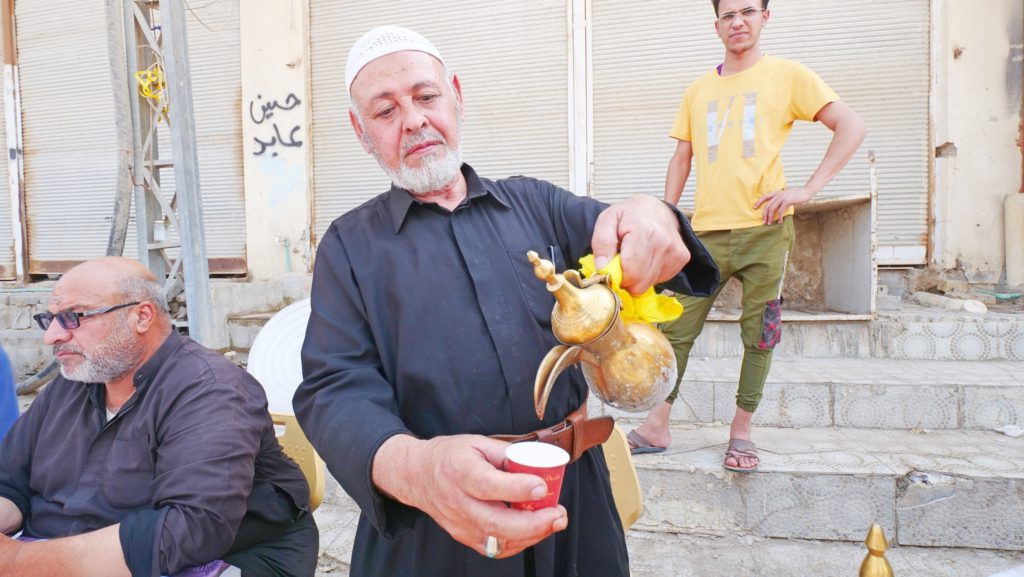
Explore the bustling local markets, where you can immerse yourself in the vibrant atmosphere and discover authentic Iraqi handicrafts and spices. You can even visit the world’s largest cemetery in the city!

For a taste of traditional Iraqi cuisine, Najaf’s diverse range of restaurants will leave your taste buds begging for more. Indulge in local favorites like ash, hareesa, kebabs, and qeema to get a true taste of Iraq’s vibrant culinary culture.
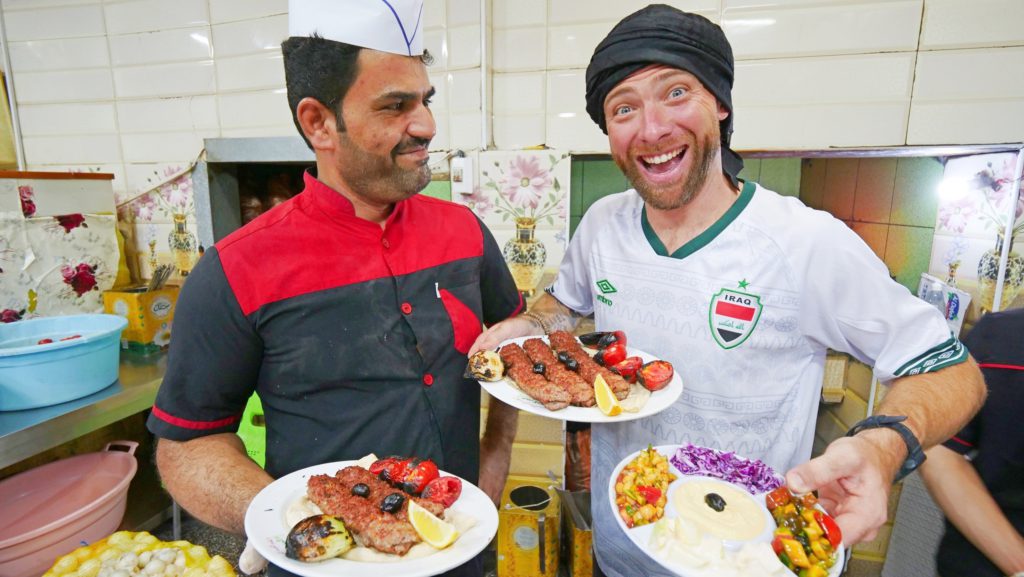
I visited Najaf on my way from Baghdad to Karbala with my friends from Bil Weekend. I had an extraordinary time exploring the famed pilgrimage route between the two cities, and I think you will, too. These are the top things you must experience in Najaf, Iraq!
Because Najaf, Iraq lies along the pilgrimage route to Karbala, there are vendors who generously prepare food and water for people passing through. I met some guys cooking a massive vat of chicken biryani, who gave me some hakaka, which is the name for the crispy rice at the bottom of the biryani vat. The ghee in it gave the crispy, crunchy rice an extra rich and buttery feel.
The chicken biryani was full of flavor and had a nice mix of silky ghee, meaty and tender chicken, sweet raisins, and crispy onions. It was an amazing texture sensation in my mouth and the mix of savory and sweet blew my mind. Meeting the pilgrimage route vendors and trying their amazing food was a wonderful thing to experience. I highly recommend it to anyone visiting the country during the annual pilgrimage!
While making my way through the Grand Bazaar of Najaf, Iraq toward the Imam Ali Shrine, I got swept up in the pilgrimage procession. Along the way, I got to get a taste of the bazaar, where I tried a unique sweet called daheen. Made from flour, ghee, walnuts, sugar, and buffalo cream, it’s incredibly rich and quite sweet. I also tried some slightly bitter palm hearts.
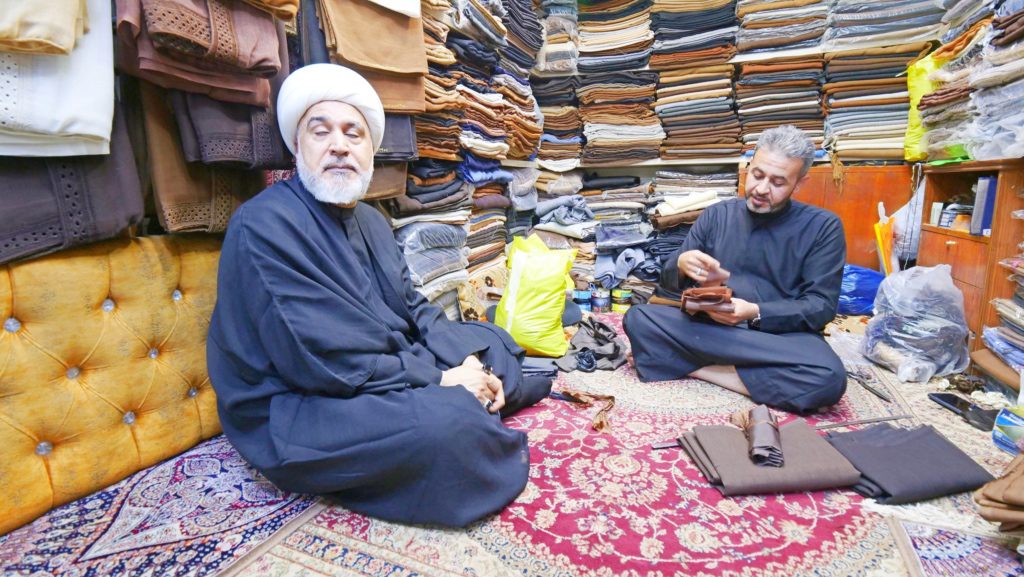
I also visited a local shop selling handmade Iraqi turbans. The friendly owner let me try on several varieties in an array of colors, wrapping them around my head. I also briefly stopped in a jewelry shop selling prayer beads. I even found a fabric store where everything was sewn by hand, including sheep hair fabric that took two months to make and cost $500! Near the end of my time there, I found another shop selling a less sweet version of daheen without the cream and walnuts. It reminded me of a milder baklava!
Toward the end of the Grand Bazaar in Najaf, Iraq is the impressive Imam Ali Shrine. The shrine is a significant religious site for Muslims around the world. Built in 977, the mosque is believed to contain the tomb of Ali ibn Abi Talib, a revered figure in Islamic history. The shrine attracts millions of pilgrims annually, who come to pay their respects and seek spiritual solace.
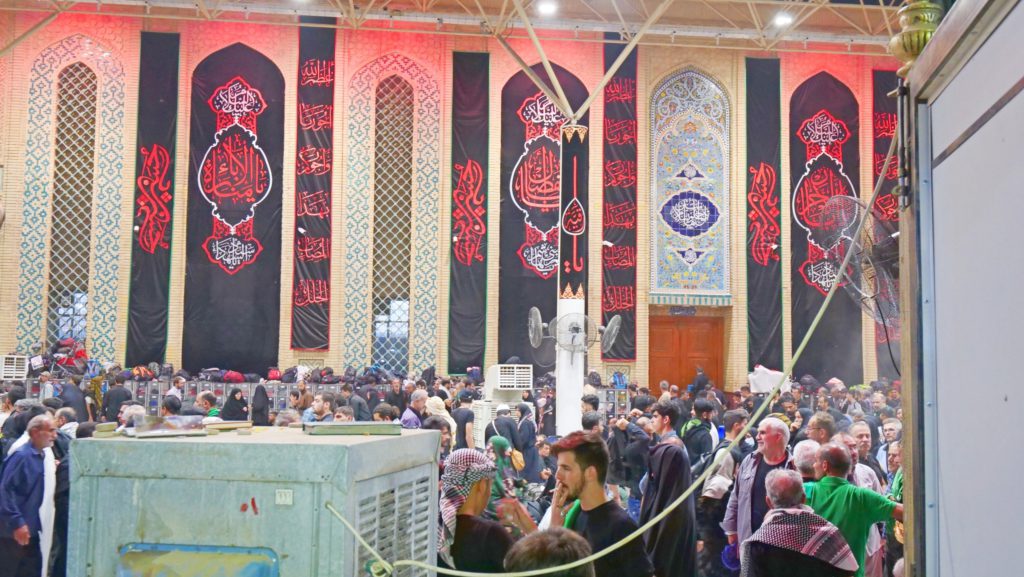
I had the honor of visiting the shrine during the annual pilgrimage. Photography inside is strictly forbidden, the shrine is decorated with intricate green, blue, and gold mosaics. It was a spiritual experience unlike anything I’ve ever experienced before. I could feel the electric energy from the people around me. It was both beautiful and overwhelming, and something I’ll never forget!
After visiting the shrine, I had the opportunity to try some delicious Iraqi beef and lamb kebabs for breakfast in Najaf, Iraq. The kebabs were made with a mix of both meats, which gave them a unique flavor. Watching the chefs grind the meat and form the kebabs before grilling them was a fascinating experience.
Alongside the kebabs, we had charred onions, tomatoes, and a wedge of lemon. My guide, Jafar, taught me how to make a sandwich with all the ingredients, adding a sprinkle of vibrant purple sumac for extra flavor. The combination of the juicy tomato, flavorful meat, and smoky taste was absolutely delightful.
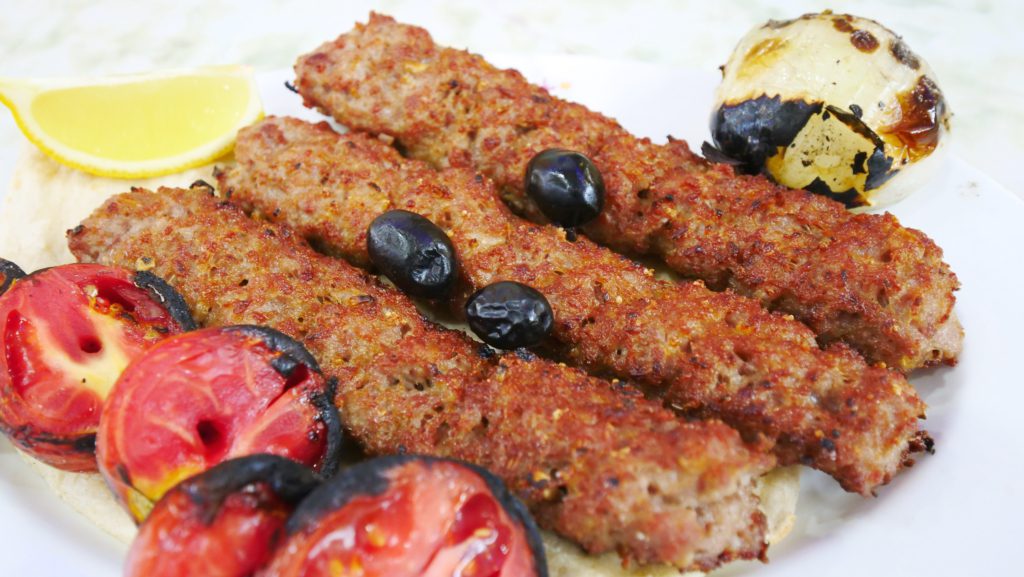
In addition to the kebabs, we also enjoyed chicken shorba, a thick and comforting chicken soup. They also brought us hummus and a variety of vegetable dishes including purple cabbage and baytinijan. The hummus paired perfectly with the kebabs, adding a creamy and tangy element to each bite. I couldn’t get enough of them!
If you’re itching to try more traditional dishes in Najaf, Iraq, look no further than ash and hareesa. Ash is a thick stew made from grains, monk peas, cow peas, and beef. Hareesa, meanwhile, is made from wheat, beef, and a bit of cinnamon. Both dishes are slow-cooked for about 12 hours and served in containers.
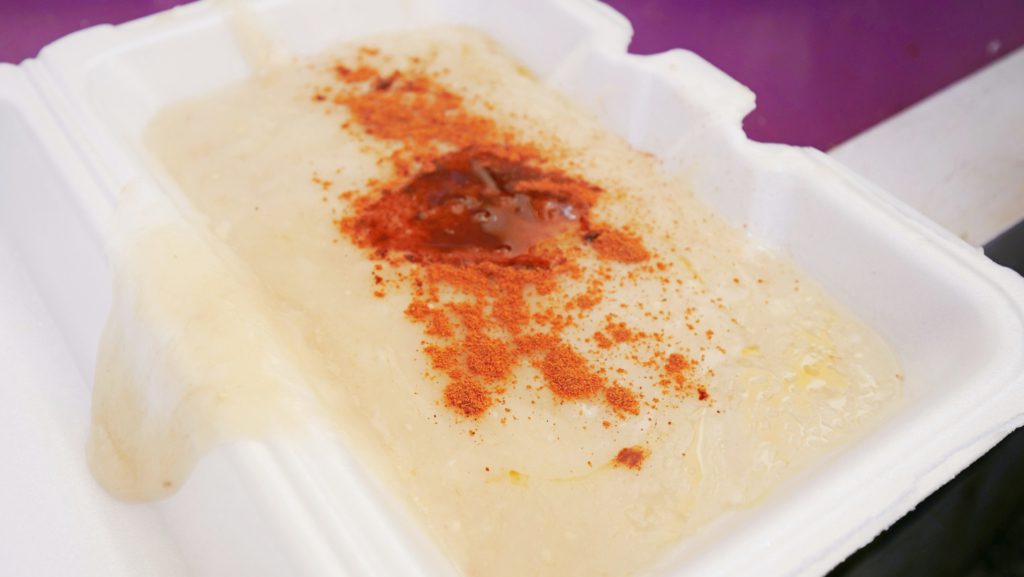
The ash was dark and rich, with the shredded beef and crispy onions adding to its earthy flavor. The dish was filling and energizing, which makes it a great thing to eat at the start of a long day. It’s heavy, hearty, and savory and had my mouth watering the entire time.
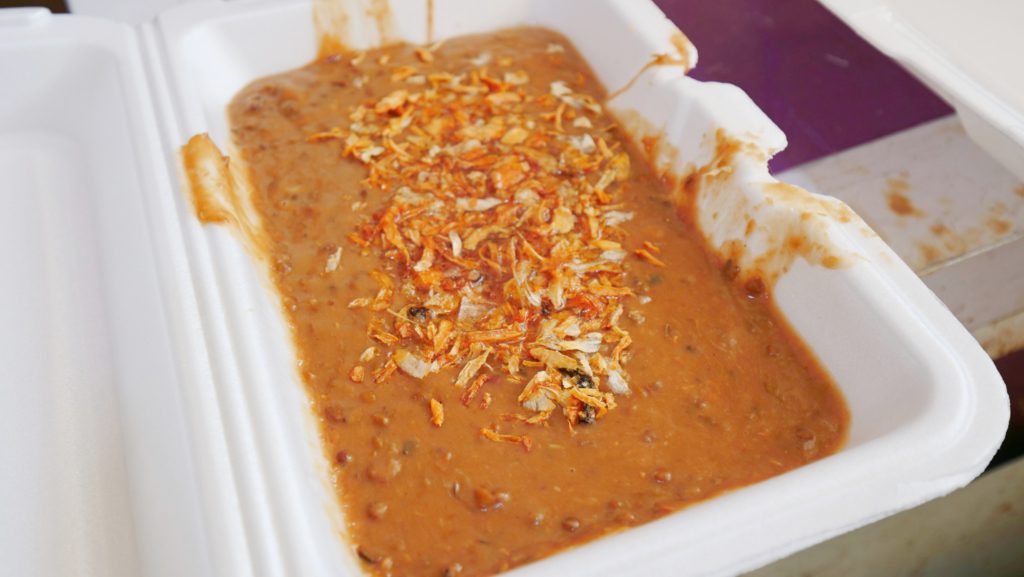
The hareesa, on the other hand, is like a thick porridge that contains a hint of cinnamon. It’s more of a beige color, as opposed to the rich, reddish-brown of the ash. You can make the hareesa sweeter by adding sugar. It’s so thick, it stretches as you spoon it up, almost like melted cheese!

Trying the ash and hareesa was another wonderful taste of traditional Iraqi food. The shop owners were incredibly kind. My team and I were the only ones in the shop at the time most of the people in the city were getting free food along the pilgrimage route. They were yet another highlight of my time in Najaf!
My last stop before leaving Najaf, Iraq, was Wadi-us-Salaam, the largest cemetery in the world. Also known as the Valley of Peace, it covers over 1,485 acres. Nearly six million people are buried there, and many Shi’ites request to be buried there. The cemetery is a sea of tombs and mausoleums as far as the eye can see.
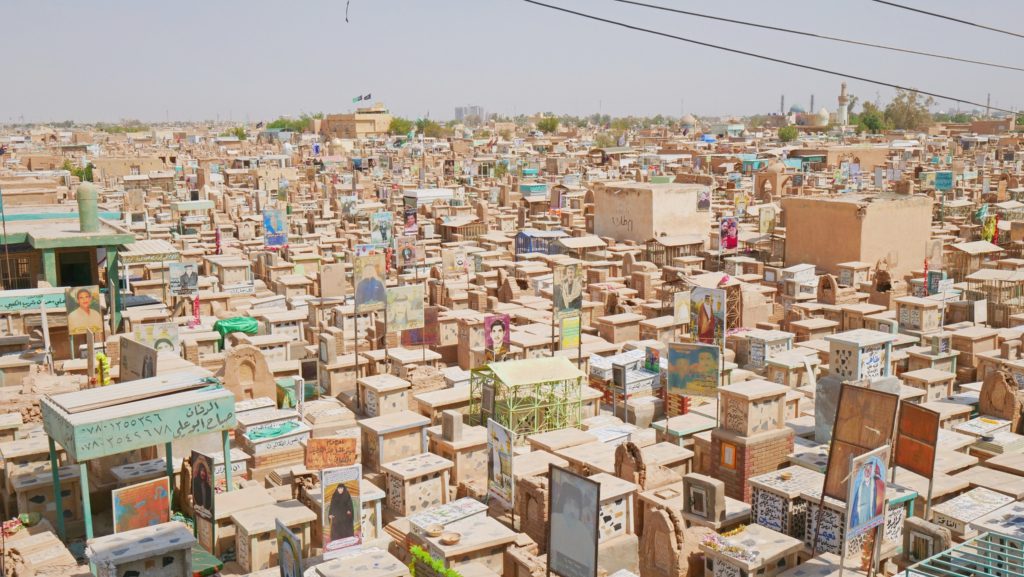
The sight of thousands of tombs was overwhelming. As we parked in a nearby garage, we were able to see the cemetery from above, which showed us just how expansive the cemetery is. As we drove through the cemetery, we could see graves of varying heights and sizes, alongside empty plots designated for future use.

Visitors had adorned some of the graves with flowers or Korans. Despite its somber atmosphere, the Valley of Peace possessed a certain beauty that stuck with me as we made our way to our next city, Karbala.
Before I visited Najaf, my guides told me it was a special city. But I didn’t know just how moved I would be until I got there. Between meeting the vendors who generously feed the pilgrims, to being around the pilgrims making their way to the shrine, it was a heartwarming experience all around.
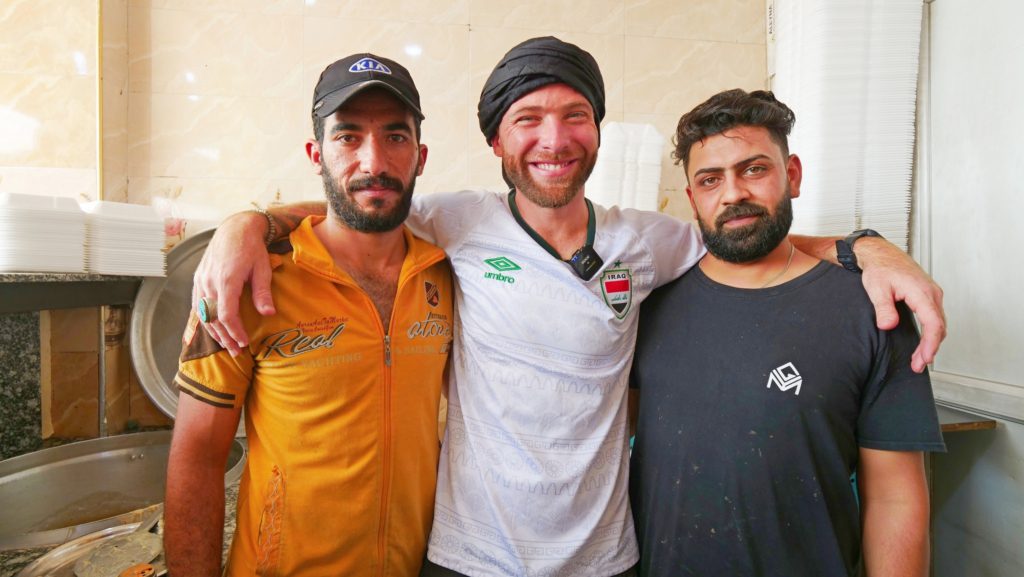
Once you add in the kind locals and the outstanding food, you have the recipe for a wonderful travel destination. Iraq’s people are beautiful, warm, and kind. Like every other place I’ve visited, they’re generous and excited to share their culture with visitors. I’m glad I got to spend a day in this incredible city. Book a trip to Najaf, Iraq to experience it for yourself!
Counter
101 Countries • 1432 Cities